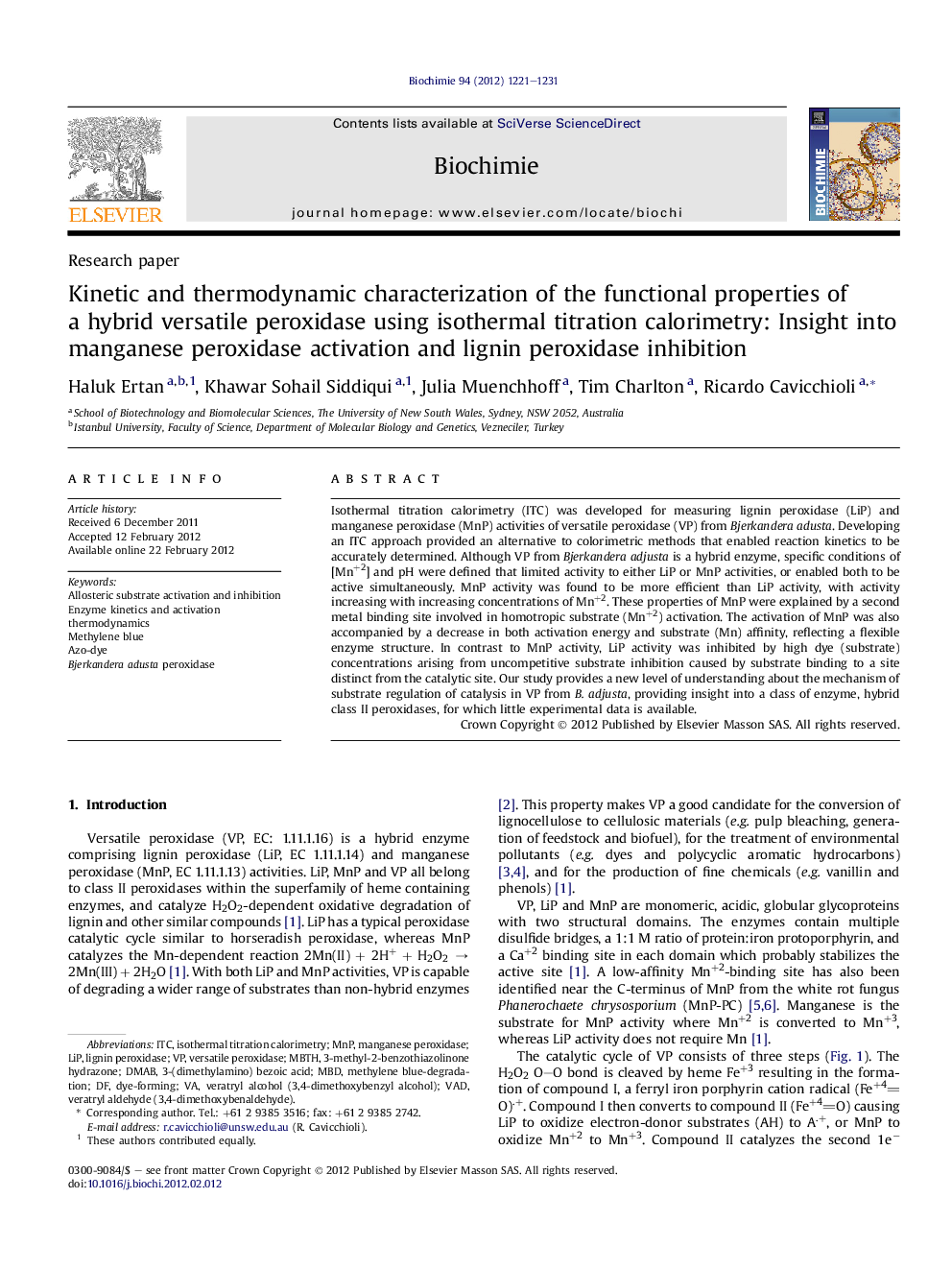| Article ID | Journal | Published Year | Pages | File Type |
|---|---|---|---|---|
| 1952432 | Biochimie | 2012 | 11 Pages |
Isothermal titration calorimetry (ITC) was developed for measuring lignin peroxidase (LiP) and manganese peroxidase (MnP) activities of versatile peroxidase (VP) from Bjerkandera adusta. Developing an ITC approach provided an alternative to colorimetric methods that enabled reaction kinetics to be accurately determined. Although VP from Bjerkandera adjusta is a hybrid enzyme, specific conditions of [Mn+2] and pH were defined that limited activity to either LiP or MnP activities, or enabled both to be active simultaneously. MnP activity was found to be more efficient than LiP activity, with activity increasing with increasing concentrations of Mn+2. These properties of MnP were explained by a second metal binding site involved in homotropic substrate (Mn+2) activation. The activation of MnP was also accompanied by a decrease in both activation energy and substrate (Mn) affinity, reflecting a flexible enzyme structure. In contrast to MnP activity, LiP activity was inhibited by high dye (substrate) concentrations arising from uncompetitive substrate inhibition caused by substrate binding to a site distinct from the catalytic site. Our study provides a new level of understanding about the mechanism of substrate regulation of catalysis in VP from B. adjusta, providing insight into a class of enzyme, hybrid class II peroxidases, for which little experimental data is available.
► Lignin peroxidase (LiP) and manganese peroxidase (MnP) activity was assayed by ITC. ► MnP was more efficient than LiP activity due to homotropic substrate activation. ► MnP activation involved a decrease in activation energy and substrate affinity. ► LiP activity was subject to uncompetitive substrate inhibition. ► Versatile peroxidase from Bjerkandera adjusta has complex substrate regulation of catalysis.
